Basic Usage Guide¶
This is a basic usage guide for the Graphical User Interface (GUI) of NEST Desktop.
Note
If you want to see a quick start guide for in NEST Desktop, we have prepared a video showing the steps how to Construct networks and Explore activity.
Once you start NEST Desktop, you can see the start page containing an image of a laptop with the NEST logo on its screen. At the bottom it shows a short description of NEST Desktop (left) and some useful links and the current version (right).
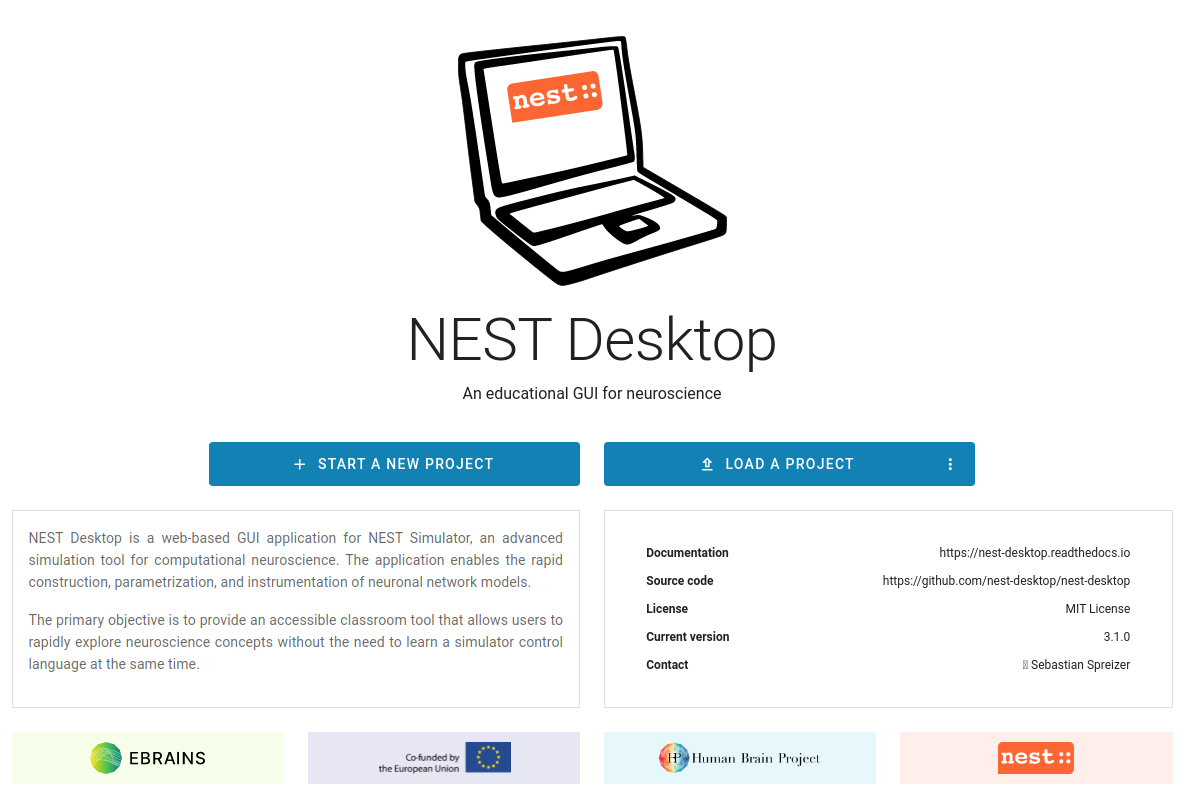
Note
You can reload the page if NEST Desktop has somehow crashed.
First steps¶
The video shows the first steps to construct a network and explore its activity.
Construct networks¶
If you want to construct a network, you will have to open the network editor. The network editor shows the network graph composed of nodes (shapes) and connections (lines).
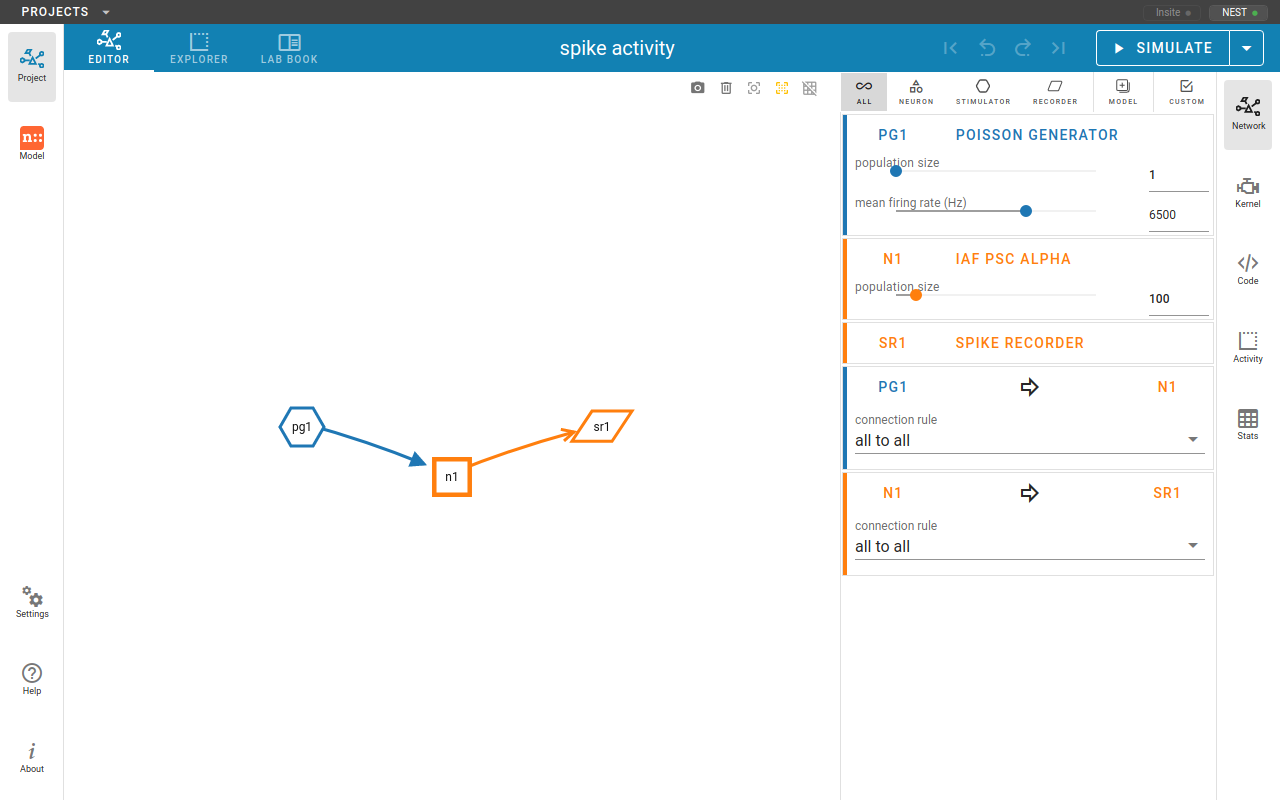
Create nodes¶

In order to create a new node, you can click with the right mouse button in the network editor and a pie panel with three letters appears to select an element type. A node is divided into three element types: stimulus (S), recording (R) device and neuron (N). Then it creates a node of the selected element type.
Connect nodes¶
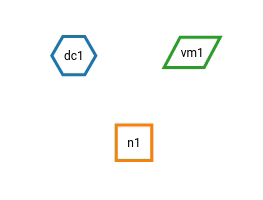
Forming a network of nodes is defined by making connections between and within nodes. In order to connect nodes, you can click on a connector of a node, then move the mouse towards anther node and finally click on a target node. It creates a connection between source and target nodes.
Hint
By pressing the hotkey ALT and clicking a node at the same time, you enable the connecting mode or continue connecting other nodes.
Select model and parameters¶
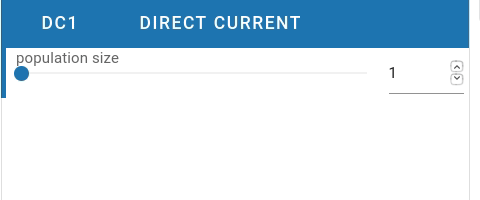
You are able to select the model of a node in the network controller. Then it shows a list of parameters which you might want to work on. Finally, you are able to change the values of visible parameters.
Simulate networks¶

You can click on the SIMULATE button to start the simulation of your network. In the code editor you can inspect the generated script code.
Explore activity¶
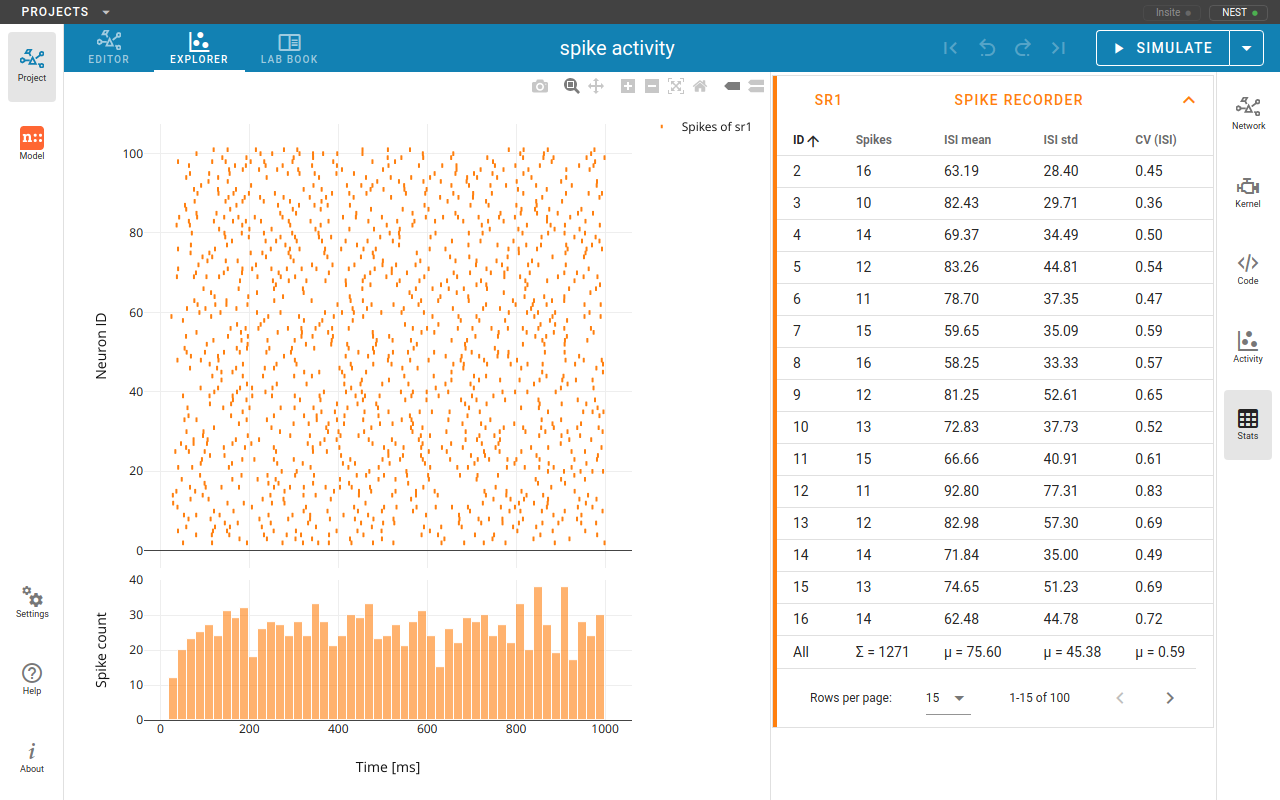
The network activity is composed of neuronal properties (positions and ids of neurons) and recorded events from
recording devices. Events can be subdivided in two groups: spike events and analog signals. Spike events contain times
and ids of the senders emitting events to the recording devices which can be considered as collectors (spike
recorder). Analog signals contain continuous quantities from the recording devices aka samplers (voltmeter or
multimeter) which query their targets at given time intervals. Network activity can be explored in Activity
chart graph ( or
) Activity animation
graph (
), or Activity statistics
(
).